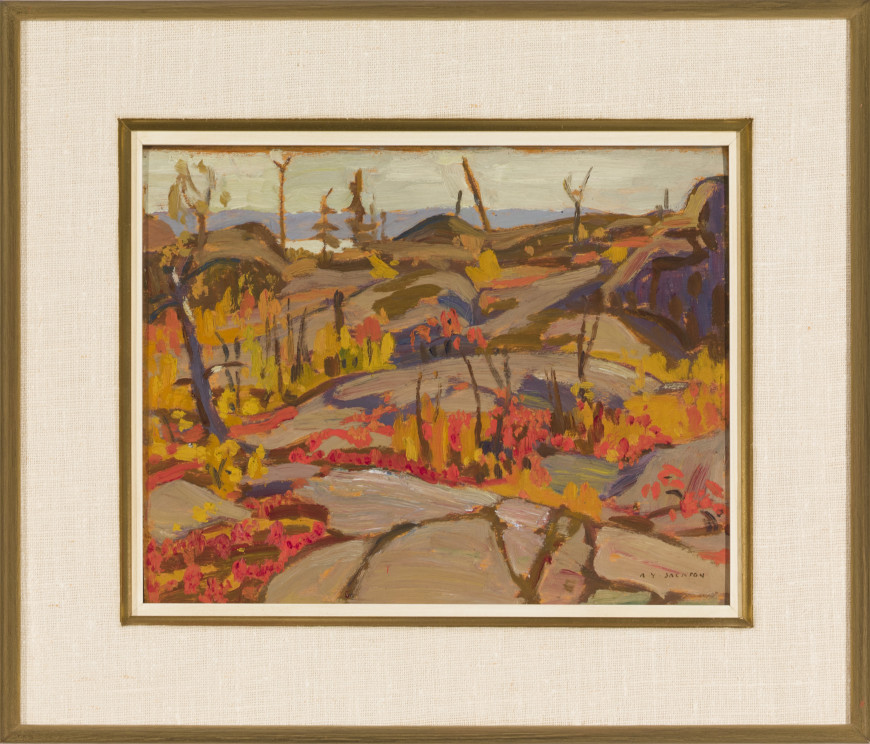-
Œuvres d'art
A.Y. JacksonWild Cherries and Huckleberries, Lake Superior, 1921 (October)1882-1974Oil on panel8 x 10 in
20.3 x 25.4 cmSoldInscriptions
signed, ‘A.Y. JACKSON’ (recto, lower right); titled and dated by the artist, ‘Wild Cherry / Huckleberry October 1921’ (verso, upper left); inscribed by the artist, ‘A.Y. JACKSON / Rossport 1921 / Lake Superior’ (verso, center)Provenance
Galerie Walter Klinkhoff Inc., Montreal;
Acquired from the above by Mitzi and Mel Dobrin.
"This sketch would be a precursor of the many Lake Superior paintings Jackson would paint over the subsequent decade."
-Charles C. Hill
A.Y. Jackson, Lawren Harris and Arthur Lismer returned to Algoma in September 1921, painting around Sand Lake. Lismer had to leave to teach at the Ontario College of Art, but Jackson and Harris stayed on, travelling north on the Algoma Central Railway to Franz where they caught a westbound Canadian Pacific freight train, ending up at Rossport near Nipigon Bay. This was the first time the two artists painted on the north shore of Lake Superior and apparently they only stayed a few days.
There are few sketches by Jackson that can be surely dated to this trip but Jackson’s inscriptions on the back of Wild Cherries and Huckleberries, Lake Superior confirm the site and date. The Lake Superior landscape differed considerably from the dense foliage of Algoma, as Jackson wrote in his autobiography, A Painter’s Country. “The Algoma country was too opulent for Harris; he wanted something bare and stark, so at the conclusion of one of our sketching trips he and I went to the north shore of Lake Superior, a country much of which had been burnt over years before. New growth was slowly appearing. … I know of no more impressive scenery in Canada for the landscape painter. There is a sublime order to it, the long curves of the beaches, the sweeping ranges of hills, and headlands that push out into the lake. Inland there are intimate little lakes, stretches of muskeg, outcrops of rock; there is little soil for agriculture. In the autumn the whole country glows with colour; the huckleberry and the pincherry turn crimson, the mountain ash is loaded with red berries, the poplar and the birch turn yellow and the tamarac greenish gold.” In this sketch the bare rocks, punctuated by the leafless saplings and rampikes, become a frame for a lyrical dance of vivid yellows, oranges, crimson reds, blues and purples, allowing only a glimpse of the water and hills beyond. This sketch would be a precursor of the many Lake Superior paintings Jackson would paint over the subsequent decade.
Charles C. Hill













